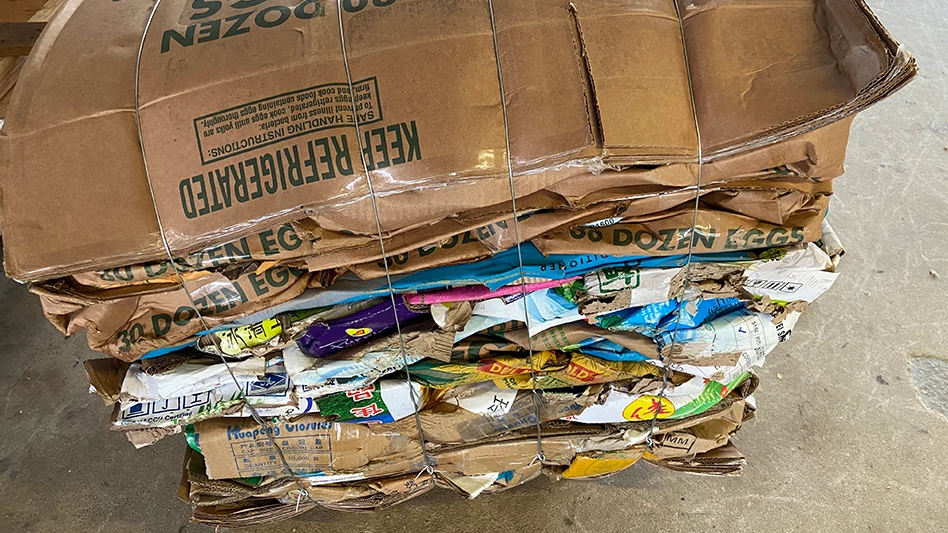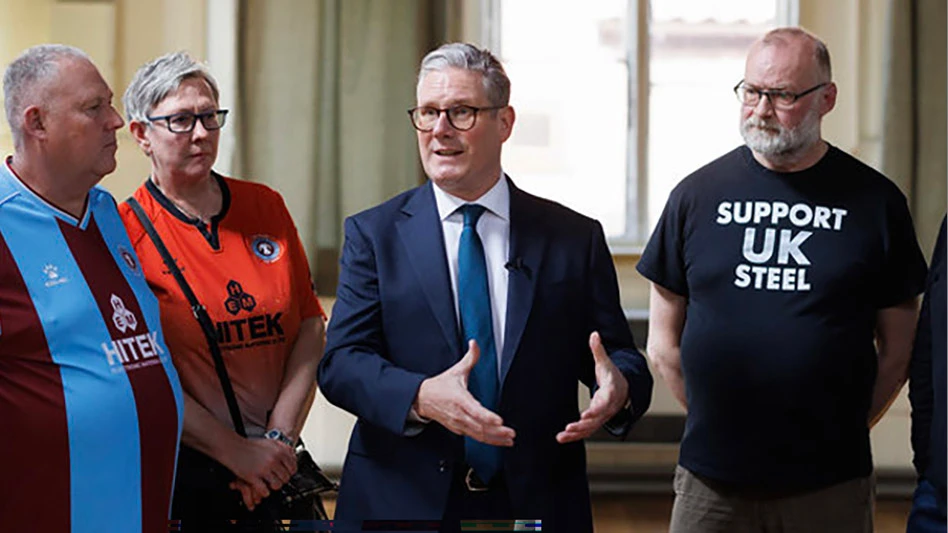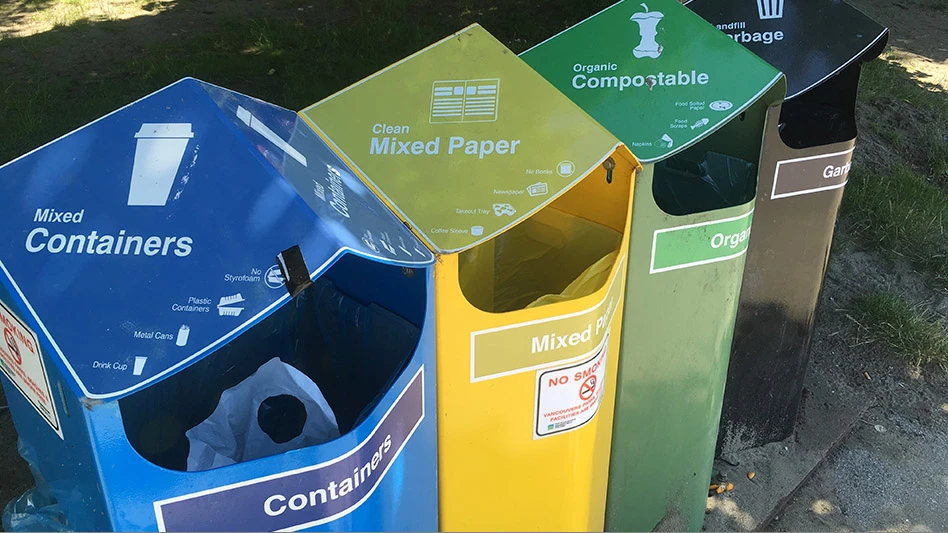 Two U.S. financial services companies are looking to capitalize on the interest in the copper market by introducing exchange-traded funds (ETF) for the metal.
Two U.S. financial services companies are looking to capitalize on the interest in the copper market by introducing exchange-traded funds (ETF) for the metal.
The financial services firms J.P. Morgan Chase, through its J.P. Morgan Commodity ETF Services LLC subsidiary, and BlackRock Inc. have both applied with the U.S. Securities and Exchange Commission (SEC) to begin selling ETFs for copper. The initial applications were submitted to the SEC in October 2010 and have gone through a number of revisions as the SEC scrutinizes the effect ETFs could have on the physical market for copper.
The two companies combined would physically control approximately 180,000 tons of copper, with J.P. Morgan controlling nearly 61,800 tons through its ETF, while BlackRock's ETF would take physical ownership of 121,000 tons of copper, according to their proposals. The companies would store their copper in warehouses they owned.
The interest in commodity-based ETFs as an alternative investment vehicle has blossomed during the past several years. At the same time, copper pricing has been extremely volatile. With some metals buyers already expressing concern about potential shortages of copper, the permanent removal of nearly 200,000 tons of the metal from the market could make a tight market even tighter, putting greater pressure on prices. In their initial proposals, J.P. Morgan and BlackRock also cited potential copper shortages, as mines struggled to meet demand with new production.
The proposed copper ETFs could create a number of concerns, as well as opportunities, for buyers and sellers of copper scrap.
What exactly is an ETF?
In the simplest terms, ETFs are funds that track stock indexes, such as the NASDAQ-100, S&P 500 and Dow Jones. In a commodity ETF, a fund controls a certain amount of a particular material, similar to a mutual fund. However, unlike a mutual fund, the price is not valued once per day but instead fluctuates such as the stock of a publicly owned company.
ETFs for metals have been primarily limited to precious metals. At this time, people who are interested in purchasing copper as an investment tool are limited to purchasing futures contracts on exchanges such as the London Metal Exchange (LME) or purchasing stocks in copper mining companies, such as Codelco or Xstrata Corp.
ETF Securities already is marketing a copper ETF in Europe that, according to one report, is backed by LME warrants.
However, one metals analyst says ETF Securities' copper ETF has not generated significant traction as of yet.
A South Korean asset management company, Mirae Asset MAPS Global Investments, also has proposed a copper-based ETF. According to published reports, the Tiger Physical Copper ETF would hold roughly 25,000 metric tons of copper in Korean warehouses. This ETF could be launched by the first quarter of 2012, according to a Reuters report. Reuters speculates Mirae Asset may introduce other metals ETF in the future.
Scarcity Scare
The potential impact of the proposed copper ETFs was discussed during the Institute of Scrap Recycling Industries Inc. (ISRI) 2011 Commodity Roundtable in Chicago in September. One concern, said Robert Bernstein of Vandenberg & Feliu, New York, was the relative tightness of the copper market currently. With the specter of copper shortages growing, an ETF could prove problematic.
If approved in their present form, the ETFs proposed by J.P. Morgan Chase and BlackRock would equal nearly 28 percent of the 650,000 tons of copper held by the LME, the COMEX and the Shanghai Futures Exchange, Bernstein said.
With the two ETFs controlling such a disproportionate percentage of the overall copper market, some consumers say they are concerned they could be subjected to yet more volatile markets and a relative absence of copper.
Common wisdom has been that copper supply and demand have been tight, with the LME, the Chicago COMEX and the Shanghai Futures Exchange controlling a fairly small volume of the metal. However, a recent announcement by Chinese government ministers may alter this thinking. According to a recent Wall Street Journal article, in a statement in front of delegates of the International Copper Study Group during a conference in Lisbon, Portugal, Dr. Bo Zhao, deputy director of copper development, China Nonferrous Metals Industry Association, said the country's copper inventories had reached 1.9 million metric tons at the end of 2010.
The announcement supports J.P. Morgan's and BlackRock's assertions that actual copper inventories are far higher than the totals on the various exchanges. The two companies' made such claims when they first submitted the prospectuses for their proposed ETFs.
China's previously unreported copper inventory figure elevated the amount of the metal in inventories to the 2.5 million-ton mark and effectively helped push copper prices lower.

A Status Update
The SEC has requested a number of adjustments to the initial prospectuses filed by J.P. Morgan and BlackRock.
In more recent submissions, J.P. Morgan and BlackRock have reversed their earlier outlooks for tight copper supply and growing demand. In amended SEC filings, J.P. Morgan adjusted its supply forecast, stating that the excess of copper stood at nearly 2.53 million metric tons, while BlackRock estimated the surplus at 2.8 million metric tons.
Both BlackRock and J.P. Morgan have deferred from commenting on the proposed ETFs. A spokesman for BlackRock cited the SEC "quiet period" rules following its prospectus submittal.
At the ISRI event, Bernstein expressed concern that these ETFs could play havoc with a commodity that is required for construction and infrastructure needs.
"There's a huge conceptual problem that has to be addressed when the SEC is asked to consider products legalizing the hoarding of a commodity needed industrially," Bernstein is quoted as saying in a Dow Jones Newswire article.
Other critics say the introduction of a copper ETF could allow for speculative manipulation by parties who may seek to artificially move the price.
Jason Schenker, president of Prestige Economics, Austin, Texas, also spoke at the ISRI Commodities Roundtable. He was more supportive of the proposed copper ETFs than Bernstein, saying they would give people direct access to copper for less than it costs to purchase swaps on the LME.
"ETFs offer people in the industry access to physical exposure," Schenker says. "If you were a scrap dealer and an aggregator purchaser wanted your copper, but wanted to set the price in the future, this could benefit you."
Schenker says copper ETFs would be smaller, cheaper and more liquid than the LME or COMEX, appealing to smaller companies.
Bernstein, who is supporting several groups opposed to the copper ETFs, says, "The entire premise would be artificially induced removal of the copper. This is the equivalent of an investor-supported squeeze."

The author is senior and Internet editor of Recycling Today and can be contacted at dsandoval@gie.net.

Explore the November 2011 Issue
Check out more from this issue and find your next story to read.
Latest from Recycling Today
- Steel Dynamics nets $217 million on record shipments
- Massive Chinese steelmaking rebound recorded in March
- LME looks into sustainable metal pricing
- OnePlanet Solar Recycling closes $7M seed financing round
- AMCS launches AMCS Platform Spring 2025 update
- Cyclic Materials to build rare earth recycling facility in Mesa, Arizona
- Ecobat’s Seculene product earns recognition for flame-retardant properties
- IWS’ newest MRF is part of its broader strategy to modernize waste management infrastructure





